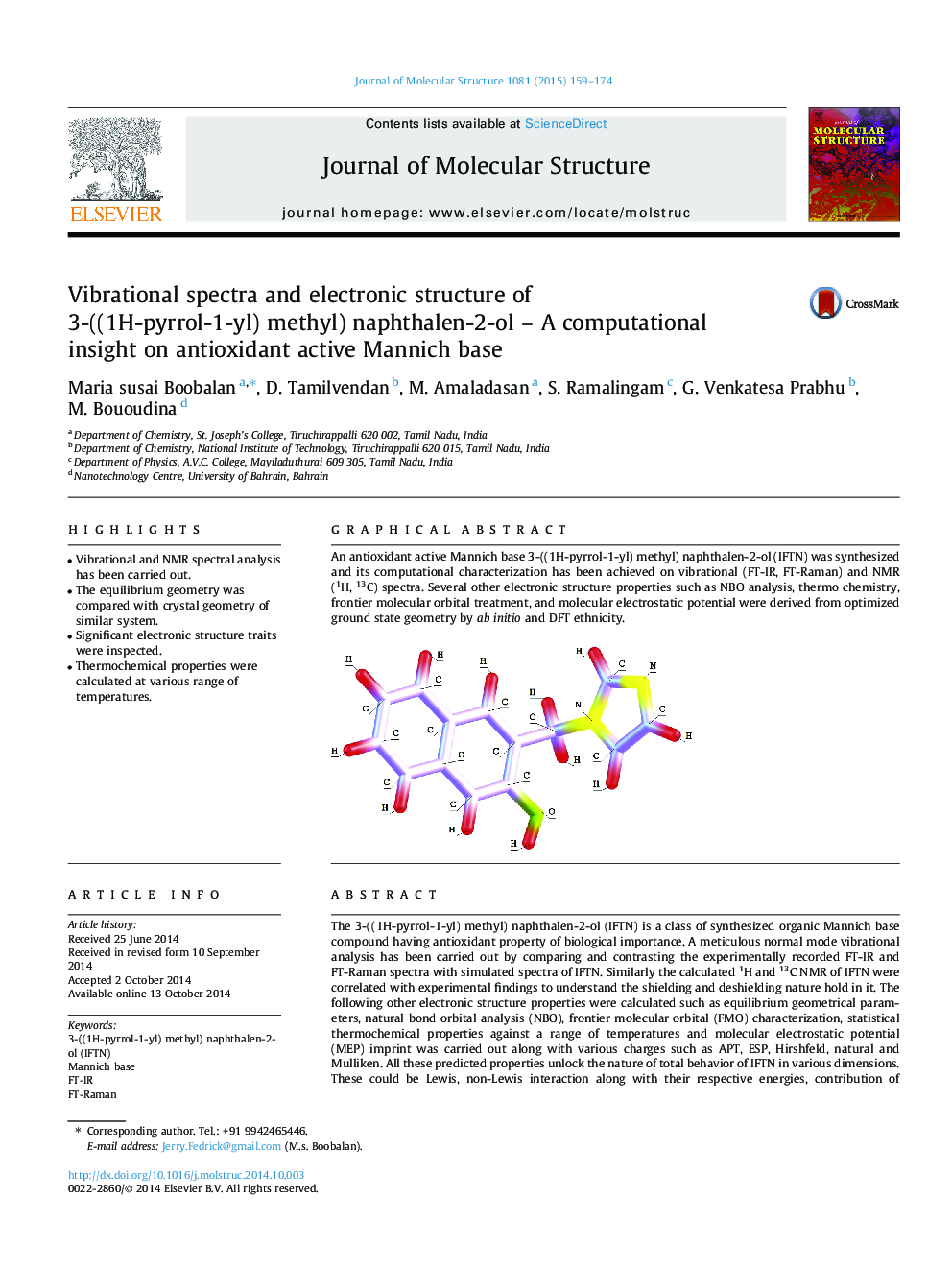| Article ID | Journal | Published Year | Pages | File Type |
|---|---|---|---|---|
| 1408318 | Journal of Molecular Structure | 2015 | 16 Pages |
•Vibrational and NMR spectral analysis has been carried out.•The equilibrium geometry was compared with crystal geometry of similar system.•Significant electronic structure traits were inspected.•Thermochemical properties were calculated at various range of temperatures.
The 3-((1H-pyrrol-1-yl) methyl) naphthalen-2-ol (IFTN) is a class of synthesized organic Mannich base compound having antioxidant property of biological importance. A meticulous normal mode vibrational analysis has been carried out by comparing and contrasting the experimentally recorded FT-IR and FT-Raman spectra with simulated spectra of IFTN. Similarly the calculated 1H and 13C NMR of IFTN were correlated with experimental findings to understand the shielding and deshielding nature hold in it. The following other electronic structure properties were calculated such as equilibrium geometrical parameters, natural bond orbital analysis (NBO), frontier molecular orbital (FMO) characterization, statistical thermochemical properties against a range of temperatures and molecular electrostatic potential (MEP) imprint was carried out along with various charges such as APT, ESP, Hirshfeld, natural and Mulliken. All these predicted properties unlock the nature of total behavior of IFTN in various dimensions. These could be Lewis, non-Lewis interaction along with their respective energies, contribution of fragmented moieties for various orders of HOMO and LUMO, temperature consequences on enthalpy, entropy, and heat capacity. In addition, the MEP leads to find electrophilic, nucleophilic reactive sites on IFTN molecular surface. The entire computational calculations has been made on HF/6-31+G/6-311++G(d,p) and B3LYP/6-31+G/6-311++G(d,p) model chemistries. A complete electronic structure observation has been achieved by this theoretical analysis.
Graphical abstractAn antioxidant active Mannich base 3-((1H-pyrrol-1-yl) methyl) naphthalen-2-ol (IFTN) was synthesized and its computational characterization has been achieved on vibrational (FT-IR, FT-Raman) and NMR (1H, 13C) spectra. Several other electronic structure properties such as NBO analysis, thermo chemistry, frontier molecular orbital treatment, and molecular electrostatic potential were derived from optimized ground state geometry by ab initio and DFT ethnicity.Figure optionsDownload full-size imageDownload as PowerPoint slide
